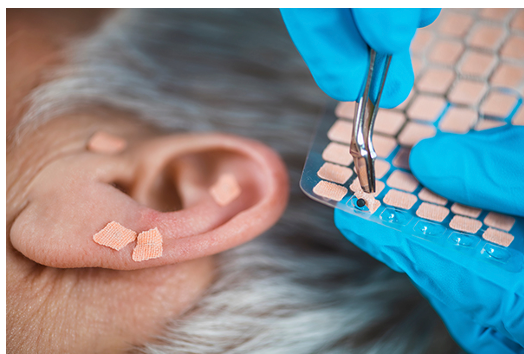What are the most common causes of positional vertigo that causes the sensation of spinning and intense dizziness.
Benign Paroxysmal Positional Vertigo (BPPV) or Benign Positional Vertigo for short, is a common vestibular disorder. Studies show that it accounts for approximately 20-30% of all vestibular complaints in clinic¹. It is characterized by recurring episodes of dizziness or vertigo and nystagmus, triggered by specific head movements. Although it can be disorienting and unsettling, BPPV is generally a condition that can be effectively managed with appropriate diagnosis and treatment. In this article, we will explore the various aspects of BPPV, including its symptoms, triggers and causes, diagnosis and treatment options, and tips for managing and preventing episodes.
In This Article
What is Benign Paroxysmal Positional Vertigo (BPPV)?
Symptoms of Positional Vertigo
Can Positional Vertigo Come and Go?
What is the Cause of Benign Paroxysmal Positional Vertigo?
What Can I do for Benign Paroxysmal Positional Vertigo?
Diagnosis
Treatment
How Do You Fix Benign Paroxysmal Positional Vertigo?
What Should You Do After Treatment for Positional Vertigo?
Does Benign Paroxysmal Positional Vertigo Ever Go Away?
Tips for Managing Positional Vertigo at Home
The Home Epley Maneuver
Brandt-Daroff Exercises
Summary
What is Benign Paroxysmal Positional Vertigo (BPPV)?
BPPV is a disorder of the inner ear that arises when small calcium carbonate crystals called otoconia become dislodged from the their normal position in the utricle¹.
The utricle is a sensory organ at the base of each semicircular canal within the inner ear. There are three semicircular canals and they are responsible for sensing rotational movement. They play a crucial role in our ability to maintain our balance.
When the crystals dislodge, they migrate into the fluid-filled semicircular canals. This interferes with the normal fluid movement, leading to false signals being sent to the brain, resulting in dizziness and vertigo.
Symptoms of Positional Vertigo
The primary symptom of BPPV is vertigo, which is a spinning sensation or a feeling of being off balance.
Other common symptoms include:
Brief episodes of dizziness lasting for a few seconds to a few minutes
Nausea and vomiting during severe episodes
Loss of balance and unsteadiness
Blurred vision or nystagmus (involuntary eye movements)
Lightheadedness or faintness
Sensation of being pulled to one direction¹
BPPV can sometimes cause related consequences, such as tinnitus (ringing or buzzing in the ears). The symptoms may last up to a minute and usually subside once the crystals have settled back down into position.
Can Positional Vertigo Come and Go?
Unfortunately, even after treatment, positional vertigo may re-occur weeks or even years later, if another crystal dislodges into your semicircular canals. If you have BPPV, anytime there is a change in the position of the head, the crystals can move and trigger an attack of vertigo and dizziness. These include common daily movements like:
Moving from lying down to sitting up in bed
Rolling over in bed
Looking upwards
Bending forwards to pick something up
Symptoms may be more frequent at times, if the otoconia do not find their way back into the utricle. This can be disturbing and fear-inducing since you might feel fine one day, but then the symptoms return again the next day.
What is the Cause of Benign Paroxysmal Positional Vertigo?
The exact cause of BPPV is often unknown, but it can occur as a result of:
Aging
Head trauma
Inner ear infections
Medical conditions affecting the inner ear, such as Ménière's disease
It may even develop spontaneously without an identifiable cause, in some cases¹.
What Can I Do for Benign Paroxysmal Positional Vertigo?
Step 1: Diagnosis
The first step is to visit your healthcare provider for an accurate diagnosis. You will likely be referred to an Otolaryngologist or Ear, Nose and Throat specialist. Diagnosing BPPV involves a thorough medical history review and a physical examination, which may include specific tests like, the Dix-Hallpike maneuver or the Roll test. To perform these tests the specialist will move you quickly from a seated to a lying down position on a bed, holding your head at a 45º angle.
The aim of these tests is to trigger the movement of dislodged otoconia within the semicircular canals to reproduce the characteristic symptoms of BPPV. If you have BPPV you will likely experience vertigo or dizziness for a few seconds when your head is moved from one position to the next. The doctor will observe any nystagmus (or jerking movements of the eyes) caused by the changing head position, to confirm the diagnosis.
Step 2: Treatment
If the result is positive on the Dix-Hallpike test for BPPV, the doctor will likely move straight into treating it with the Epley maneuver (described below), while you are lying back².
How Do You Fix Benign Paroxysmal Positional Vertigo?
Positional vertigo can be successfully treated without medicines, surgery or special equipment, using the Epley maneuver².
The Epley maneuver is a series of head and body movements performed by a healthcare professional. It helps to guide the otoconia out of the affected semicircular canal, repositioning them back into the utricle where they no longer cause symptoms.
While lying back after the Dix-Hallpike assessment, the doctor will:
Turn your head to the other side and hold for 30 seconds
Then ask you to roll onto the side, while turning your head to face the floor - holding for 30 seconds
Finally, you will swing your legs off the side of the bed to sit back up, while holding your head facing downwards for 30 seconds
Symptoms usually resolve after the maneuver has been performed, but sometimes it can take a few tries before the procedure works. In these cases, your doctor may prescribe some of these movements for you to repeat at home. In some cases, medications may be prescribed to alleviate associated symptoms such as nausea and dizziness².
What Should You Do After Treatment for Positional Vertigo?
For the remainder of the day after the Epley maneuver treatment, it is best to avoid:
Tilting your head back
Bending far forward (for example, putting on shoes)
Also avoid sleeping on the affected side for several days. It can help to prop yourself up on several pillows overnight.
Does Benign Paroxysmal Positional Vertigo Ever Go Away?
BPPV can be successfully managed and often resolves spontaneously over time, particularly in cases without an underlying cause. The repositioning maneuvers and treatments mentioned above have a high success rate in providing relief. However as mentioned before, it is possible for BPPV to recur, especially in individuals who are prone to developing otoconia displacement.
Tips for Managing Positional Vertigo at Home
It is important to stay active and perform exercises that promote balance, and your healthcare provider might prescribe some vestibular rehabilitation exercises for you to do at home.
Caution should be used during self-treatment as your dizziness and nausea may get worse during the movement. It is therefore strongly recommended that you have someone with you while you are performing the exercises for safety and reassurance.
The most effective exercise for you will depend upon which ear is affected, and more specifically, which semicircular canal is affected. Your healthcare provider will diagnose this and recommend which exercises to perform.
Here are some examples of at home vestibular rehab exercises:
The Home Epley Maneuver
This is very similar to the Epley maneuver your healthcare provider will have performed at the time of treatment.
If the problem is in your Right ear:
Start sitting up in bed with your head turned 45º to the Right
Lie back quickly, keeping your head in that position, so that your shoulders are on your pillow and your head is reclined off the edge of it
Wait for 30 seconds
Turn your head to look 45º to the Left in that reclined position
Wait another 30 seconds
Sit up on the Left side
Start facing the Left if the problem is in your Left ear³.
Brandt-Daroff Exercises
Start sitting upright on the edge of your bed
Move into a side-lying position with your nose turned upward at 45º
Hold that position until the dizziness subsides and then repeat to the other side
Summary
The symptoms of BPPV can be very disturbing since their onset may be quite sudden and they may cause people to lose their balance or even fall out of bed. Thankfully the cause is benign as a result of calcium carbonate crystals moving around the semicircular canals.
It is crucial to consult with a healthcare provider for an accurate diagnosis and appropriate treatment plan. Treatment is non-invasive and symptoms usually subside quickly afterwards.
References
¹ De Stefano A, Dispenza F, Suarez H, Perez-Fernandez N, Manrique-Huarte R, Ban JH, et al.(2014). A multicenter observational study on the role of comorbidities in the recurrent episodes of benign paroxysmal positional vertigo. Auris Nasus Larynx. 41:31–6. 10.1016/j.anl.2013.07.007
² Benign Paroxysmal Positional Vertigo (BPPV). Retrieved from https://www.hopkinsmedicine.org/health/conditions-and-diseases/benign-paroxysmal-positional-vertigo-bppv, on 15 May 2023.
³ Fife TD, et al. (2008). Practice parameter: Therapies for benign paroxysmal positional vertigo (an evidence-based review). Report of the Quality Standards Subcommittee of the American Academy of Neurology. Neurology, 70(22): 2067–2074.
⁴ Home Epley Maneuver. Retrieved from https://www.hopkinsmedicine.org/health/treatment-tests-and-therapies/home-epley-maneuver, on 15 May 2023.
When the crystals dislodge, they migrate into the fluid-filled semicircular canals. This interferes with the normal fluid movement, leading to false signals being sent to the brain, resulting in dizziness and vertigo.















